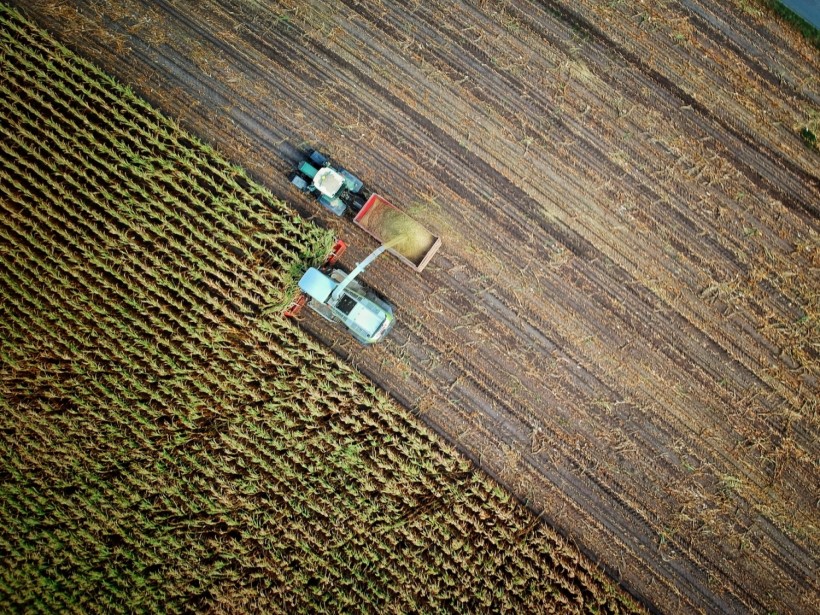Farm operation is becoming a challenge due to a variety of reasons. Rising prices of commodities that go in as input in farm operations, are threatening its profitability. Changing climate, supply chain bottlenecks, and increased labor costs are making farming difficult. In this environment, you need to improve your operations to eke out productivity in every facet of farm operations to sustain your farm.
Farm maintenance and its need
Farm operations rely on buildings, equipment, machinery, and other infrastructure to perform various farming tasks. This infrastructure helps to reduce the physical labor involved and also helps to speed up farm operations. Another benefit of using supporting equipment is the efficiency it brings to farm operations. Thus, farm equipment is critical to smooth and efficient farm operations.
Farm maintenance helps to keep farm equipment in pristine condition so that it does not fail when it is required in the field. Farm operations rely on a series of processes that need to follow a sequence and have to be performed on time. For example, harvesting cannot happen before sowing and it has to be done on time. Else the crop would fall off, rendering it unuseful.
When the required farm equipment is not available, when a process has to be performed, the process has to be delayed. For most processes in the farm, there is a limited window of time within which these processes have to be performed. For example, some crops are required to be sown before rain. If the required equipment is not available during the viable window, the crop cannot be sown after rains. Farmers will have to scrap the entire cycle.
You need to perform scheduled maintenance to ensure that farm equipment is available when they are required. The irregularity in the use of farm equipment also necessitates farm maintenance. Harvesters are used only to the end of the crop cycle. The equipment used for harvest will remain dormant until the harvest in the next crop cycle. You need to maintain such equipment properly to ensure that they are available to the full potential as and when they are required.
Due to a variety of reasons farm maintenance has an important part to play in efficient farm operations. This ensures that all machinery and equipment is well-maintained. In addition to that, farm maintenance helps to prolong the life of machinery, equipment, and buildings used in farm operations. This generates a higher return on investment on any capital expenditure for the farm. Farm maintenance helps to increase the profitability of your farm by reducing the cost of operations.
5 steps of farm maintenance
To improve the operational efficiency of your farm, you need to have a meticulous farm maintenance plan in place. Adhering to an effective farm maintenance plan will help to improve the efficiency of farm operations. You can follow the following five steps to create and stick with a practical farm maintenance plan.
Assessment and data collection
Your farm has a large number of resources, assets, and liabilities. You need to take stock of every equipment and process in the farm. Create a detailed list including all relevant information. If it is an equipment, you need to collect all information from the OEM and employees who have extensively worked with the equipment. If it is a process, you need to collect how the process is performed, process requirements, details from employees performing the process, etc. Information is key to building an effective maintenance plan and you need to collect as much of it as possible.
Rank order
The next step is to critically analyze all the data collected regarding the farm. This data gives you an idea of what equipment, machinery, and processes have to be part of the farm maintenance plan. You need to determine how critical each of these are to the overall farm operations. Conduct a fault tree analysis to identify machinery and processes that are absolutely critical. It helps to ascertain a rank order of equipment and processes in the farm according to how critical they are in sustaining farm operations.
Maintenance schedule
The ranked order list of all the equipment in your farm gives you an idea of the maintenance processes and the schedule required to execute them. Use the information from OEMs and experienced employees to create a maintenance schedule. You have to keep in mind that the newly formed schedule should have minimal impact on regular farm operations. In all possible cases, try to perform maintenance in scheduled downtimes for the equipment. Recommendations from OEMs do not factor in the specific needs of your farm. Due to this, you should give more credence to experienced farm hands, over OEMs, while creating maintenance schedules. External factors like changing climate, raw material costs, etc, should be factors in creating the maintenance plan.
SOPs and checklists
Standard operating procedure (SOP) gives step-by-step procedures on how maintenance tasks have to be performed. This ensures that there is no variability in how maintenance tasks are performed even when different maintenance technicians execute them. You need to create SOP for each maintenance activity required in your farm. You can form a checklist out of the SOPs you have created. Checklists make sure that maintenance technicians do not skip a step or mess up the sequence in which they have to be performed. SOPs and checklists help to systematize maintenance activities.
Automation
Once you have a systematized robust maintenance schedule, you can automate maintenance activities to minimize operational overhead. Other benefits of implementing automation include lower costs, reduced total-cost-of-ownership (TCO) of equipment, improved reliability, and increased profitability. A reliable computerized maintenance management system (CMMS) can help to automate all maintenance activities of your farm. A cloud-based CMMS helps you access maintenance data from anywhere and through any device. CMMS helps you to assimilate information that you can use for predictive maintenance and other AI-based improvements.
Final thoughts
Farm maintenance is critical as any failure of farm equipment could result in catastrophic loss in yield. It helps to improve the efficiency and profitability of farm operations. You need to create an effective farm maintenance plan by collecting and analyzing all information related to farm equipment and other assets. Use this to create and systematize a maintenance schedule. You can rely on modern software to automate farm maintenance and you can divert your attention towards core farm activities.
-
Bryan Christiansen
Bryan Christiansen is the founder and CEO of Limble CMMS. Limble is a modern, easy-to-use mobile CMMS software that takes the stress and chaos out of maintenance by helping managers organize, automate, and streamline their maintenance operations.

© 2024 NatureWorldNews.com All rights reserved. Do not reproduce without permission.
* This is a contributed article and this content does not necessarily represent the views of natureworldnews.com



![Plastic Pollution: Scientists Include Spores of Plastic-Eating Bacteria ‘Bacillus Subtilis’ to Develop 'Self-Digesting Plastic' [Study]](https://1471793142.rsc.cdn77.org/data/thumbs/full/70396/280/157/50/40/plastic-pollution-scientists-include-spores-of-plastic-eating-bacteria-bacillus-subtilis-to-develop-self-digesting-plastic-study.jpg)


